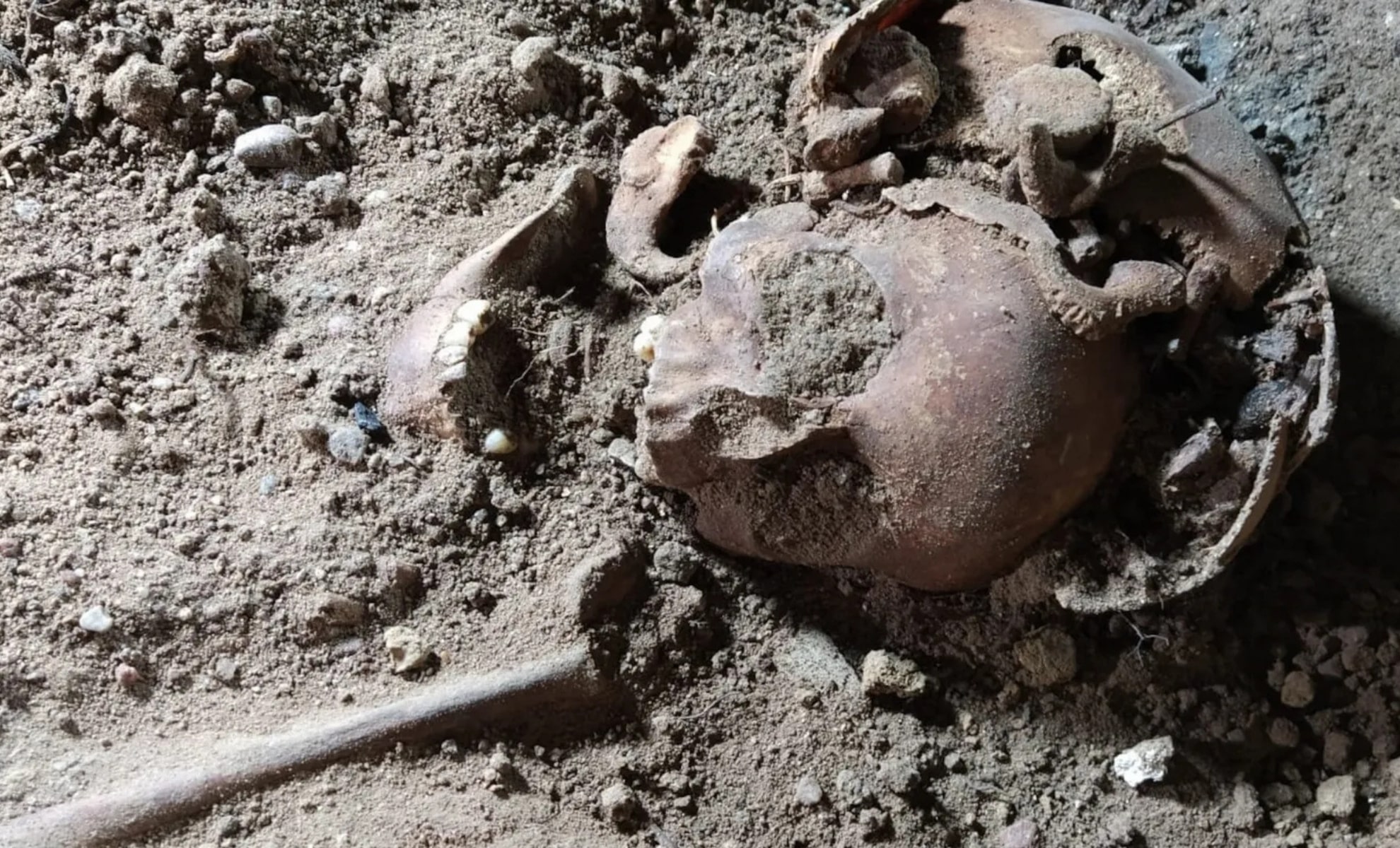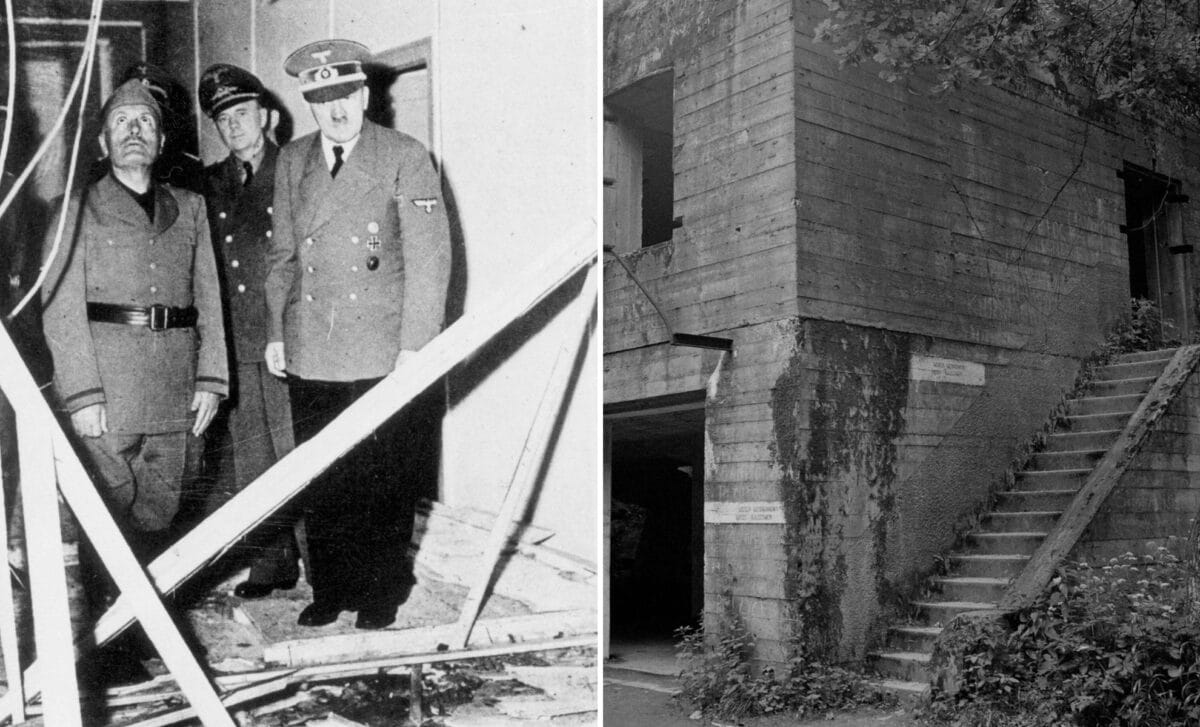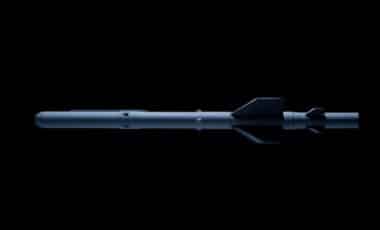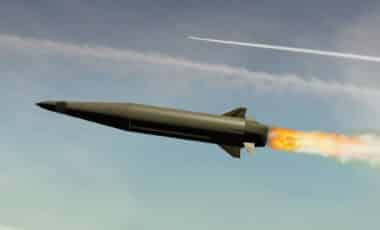A macabre discovery has been made at the Wolfsschanze, Hitler’s former secret military headquarters in northeastern Poland. Five human skeletons, including those of a newborn and an adolescent, were found buried beneath Hermann Göring’s former residence. The bodies were unearthed by a team of amateur archaeologists, raising unsettling questions about the fate of these individuals and the mysteries surrounding this historic site, reports National Geographic.
The discovery, which occurred in 2024, was made by members of the Latebra Foundation, a Polish volunteer organization specializing in archaeological excavations. The remains were found beneath the floorboards of the house once occupied by Göring, the Nazi leader’s right-hand man during the Third Reich. While the bodies date back to a time before 1945, the circumstances surrounding their burial, and the strange condition of the remains, remain unexplained.
25 Men in Nazi Uniforms Storm Swiss Alps
The Wolfsschanze and Its Dark History
The Wolfsschanze, located near the town of Kętrzyn in Poland, served as one of Hitler’s most significant military headquarters during World War II. Hitler, along with other top Nazi officials such as Göring, spent considerable time at this secretive base, especially during the invasion of the Soviet Union.
The complex was also the site of the failed assassination attempt on Hitler in 1944 by officer Claus von Stauffenberg. The Wolfsschanze, initially constructed in 1940, housed over 200 buildings, including bunkers and barracks. It was abandoned and destroyed by the Nazis during their retreat in 1944 and was later ignored during the Cold War period.
In the early 1990s, following the collapse of communism, the site was opened for public tours, attracting numerous visitors each year. Today, remnants of the Wolfsschanze still stand as a tourist attraction, with ongoing renovations, such as the reconstruction of the room where the assassination attempt took place.
According to Adrian Kostrzewa, a member of the Latebra Foundation, the remains were discovered under the floor of the house that had been occupied by Göring. The archaeologists, who were working on recovering artifacts from the area, stumbled upon a human skull while digging for relics. Their discovery led to the unearthing of four additional bodies, including those of a newborn and an adolescent. The police confirmed that the bodies were buried before 1945, but the exact cause of death remains unclear.
A Disturbing and Puzzling Discovery
What makes this discovery particularly unsettling is the condition of the remains. All but one of the bodies were missing their hands and feet, raising numerous questions about the cause of this strange phenomenon. The bodies were found just beneath the surface and close to 1940s-era plumbing that served the house. Despite being located near the surface, they appear to have been buried for some time without being disturbed.
Rafał Jackowski, a police spokesperson for the region of Varmie-Mazurie, explained that the remains appear to be from the interwar period, dating from 1918 to 1939. However, despite an investigation, it was impossible to determine the exact cause of death, and no evidence of foul play was found. Kostrzewa described the discovery as tragic, noting that it was unlike anything the Latebra Foundation volunteers had encountered before.
One of the most puzzling aspects of the find is the missing limbs. The absence of hands and feet, except for one body which still had a few toes intact, has led to various hypotheses. Some believe the limbs may have decomposed over time, though no one can definitively explain why the bodies were buried in this manner. The condition of the remains makes it difficult to identify the cause of death, and the reasons for the dismemberment remain a chilling mystery.

Theories Surrounding the Identities of the Deceased
There are several theories surrounding the identities of the individuals buried beneath Göring’s house. Kostrzewa suggests that the five people might have been members of the same family, as evidence shows one victim was elderly, and another was a newborn. This theory presents an alternative to the idea that the bodies were victims of wartime atrocities.
War historian Paweł Machcewicz has proposed that the bodies could belong to workers who were forced to build the Wolfsschanze complex. However, he also acknowledged that this theory does not fully explain the presence of a newborn among the remains. Machcewicz speculated that the remains could also be those of individuals killed after the Red Army’s capture of the area in 1944, though no definitive evidence supports this claim.
Further analysis is planned, with the Latebra Foundation intending to conduct carbon-14 dating on the remains to establish a more accurate timeline. This will help clarify whether the bodies belong to a family, victims of wartime violence, or another group altogether. Meanwhile, Kostrzewa believes it is highly unlikely that someone would have built a house above an old cemetery.








